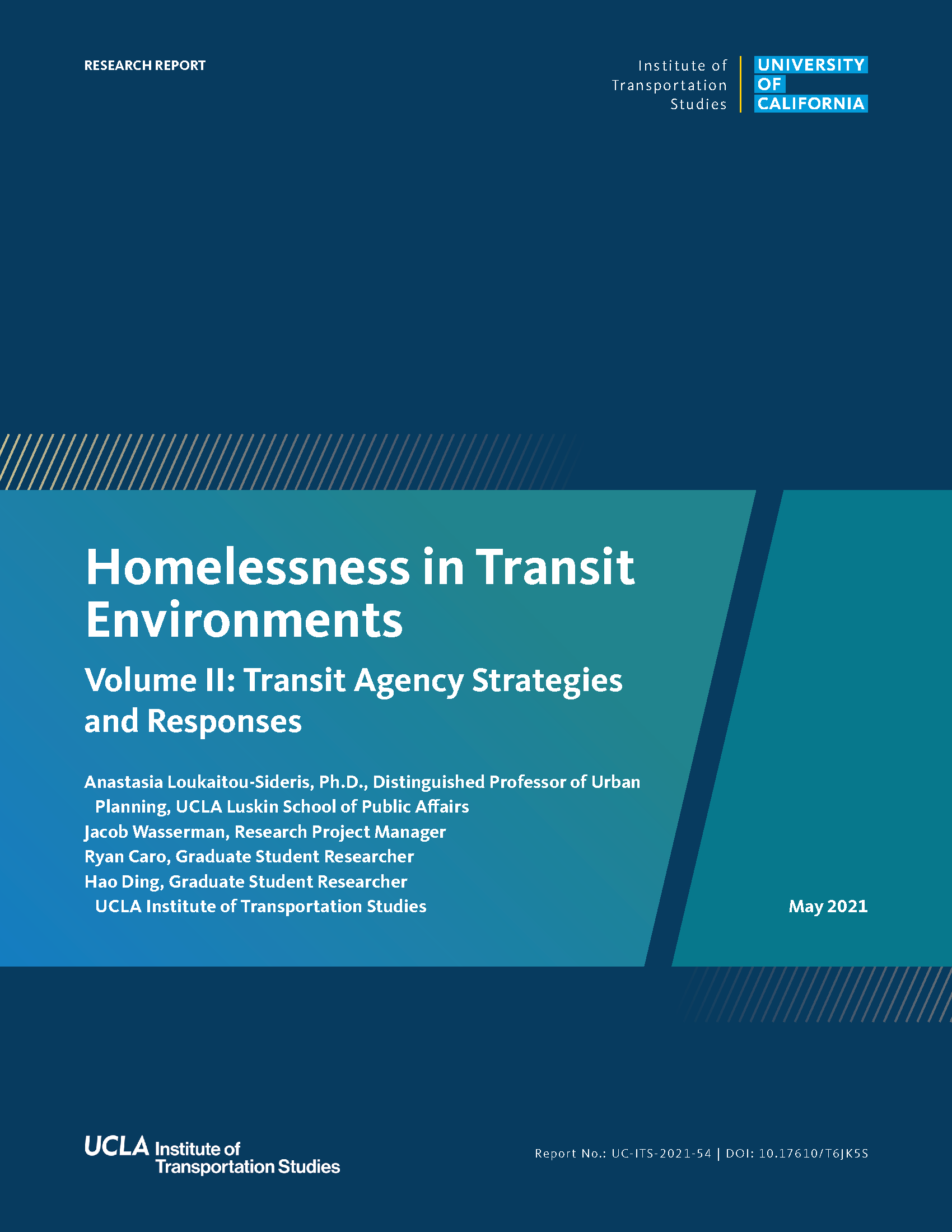Date: May 10, 2021
Author(s): Anastasia Loukaitou-Sideris, Jacob L. Wasserman, Ryan Caro, Hao Ding
Abstract
Transit settings represent sites of visible homelessness, especially since the advent of COVID-19, for many of the over 500,000 Americans unhoused each night. This report seeks to understand the scale of homelessness on transit and how transit agencies are responding to the problem. Part I describes the extent of homelessness on transit in several areas by using count data and synthesizing prior research. We find that transit serves as shelter for a high, though quite variable, share of unsheltered individuals, who are more likely than their unhoused peers elsewhere to be chronically unhoused and structurally disadvantaged. Part II provides detailed case studies of strategies taken by transit agencies around the country: hub of services, mobile outreach, discounted fares, and transportation to shelters. We summarize each strategy’s scope, implementation, impact, challenges, and lessons learned. Reviewing these strategies, we find value in collecting data more systematically, fostering external partnerships, keeping law enforcement distinct from routine homeless outreach, educating the public, and training transit staff—all in the context of a broader need for more housing and services.
About the Project
More than half a million individuals experience homelessness every night in the U.S. With the scale of the crisis often surpassing the capacities of existing safety nets — all the more so since the onset of the COVID-19 pandemic — many turn to transit vehicles, stops, and stations for shelter. Many also use transit to reach destinations such as workplaces, shelters, and community service centers. This project investigates the intersections of the pandemic, transit, and homelessness; the scale of homelessness on transit; and how transit agencies are responding to the problem. All told, centering the mobility and wellbeing of unhoused riders fits within transit’s social service role and is important to improving outcomes for them and for all riders.


